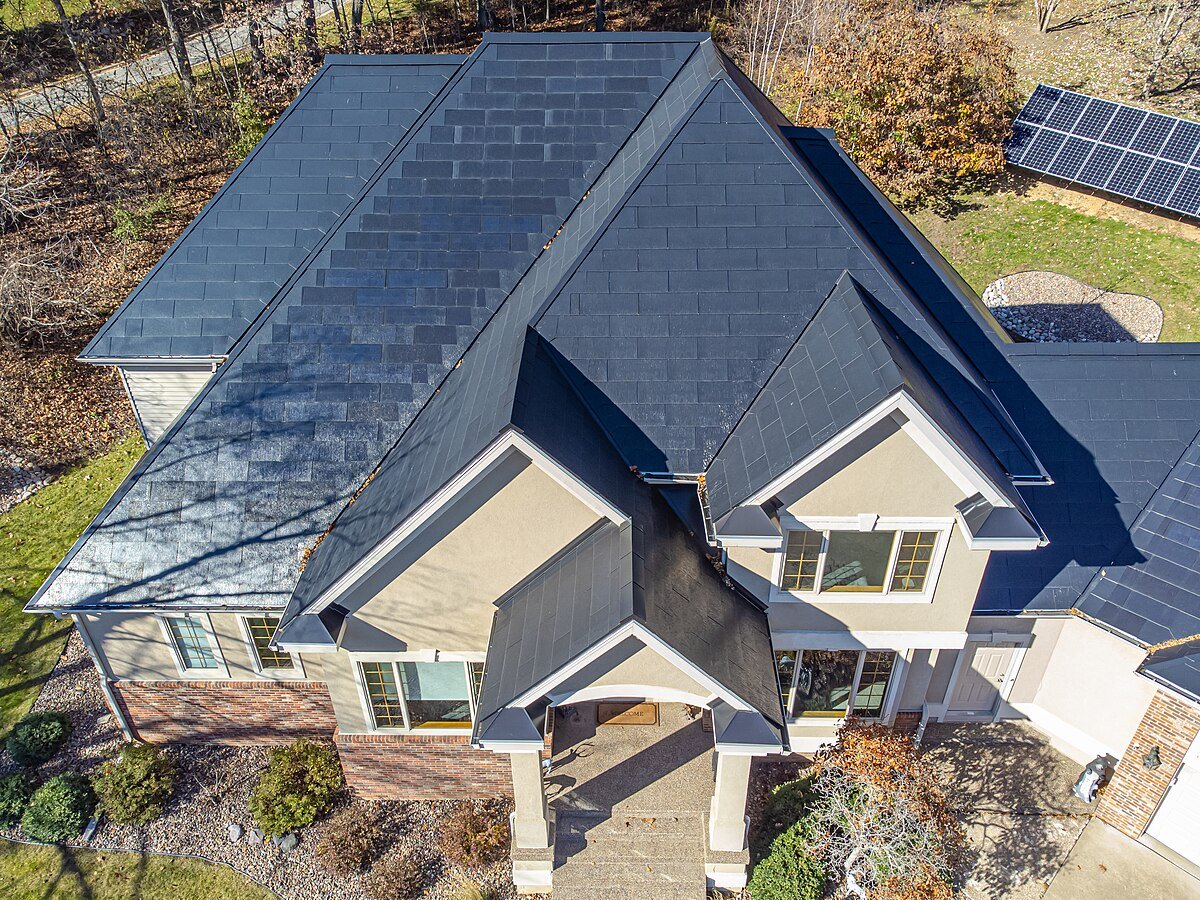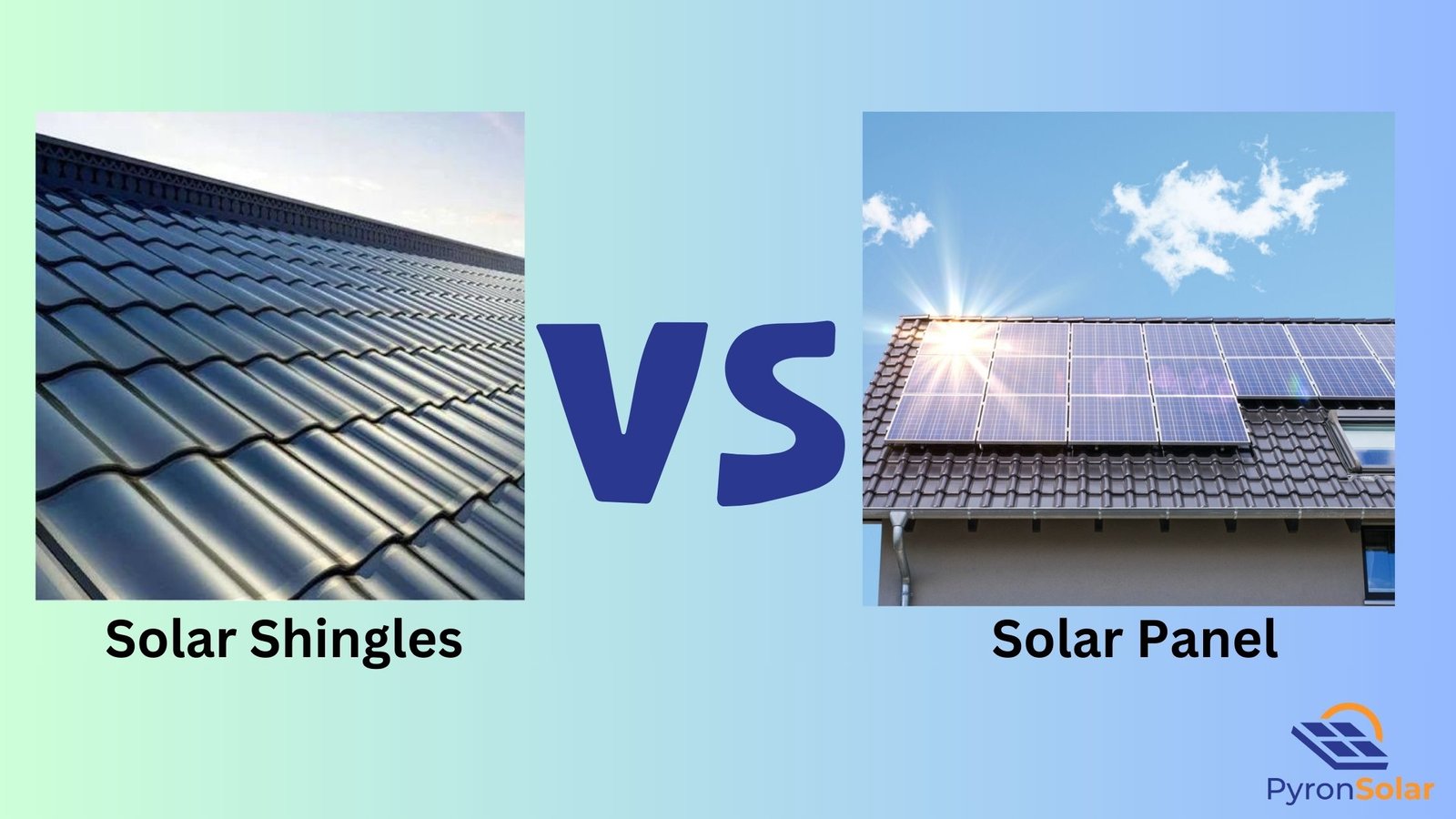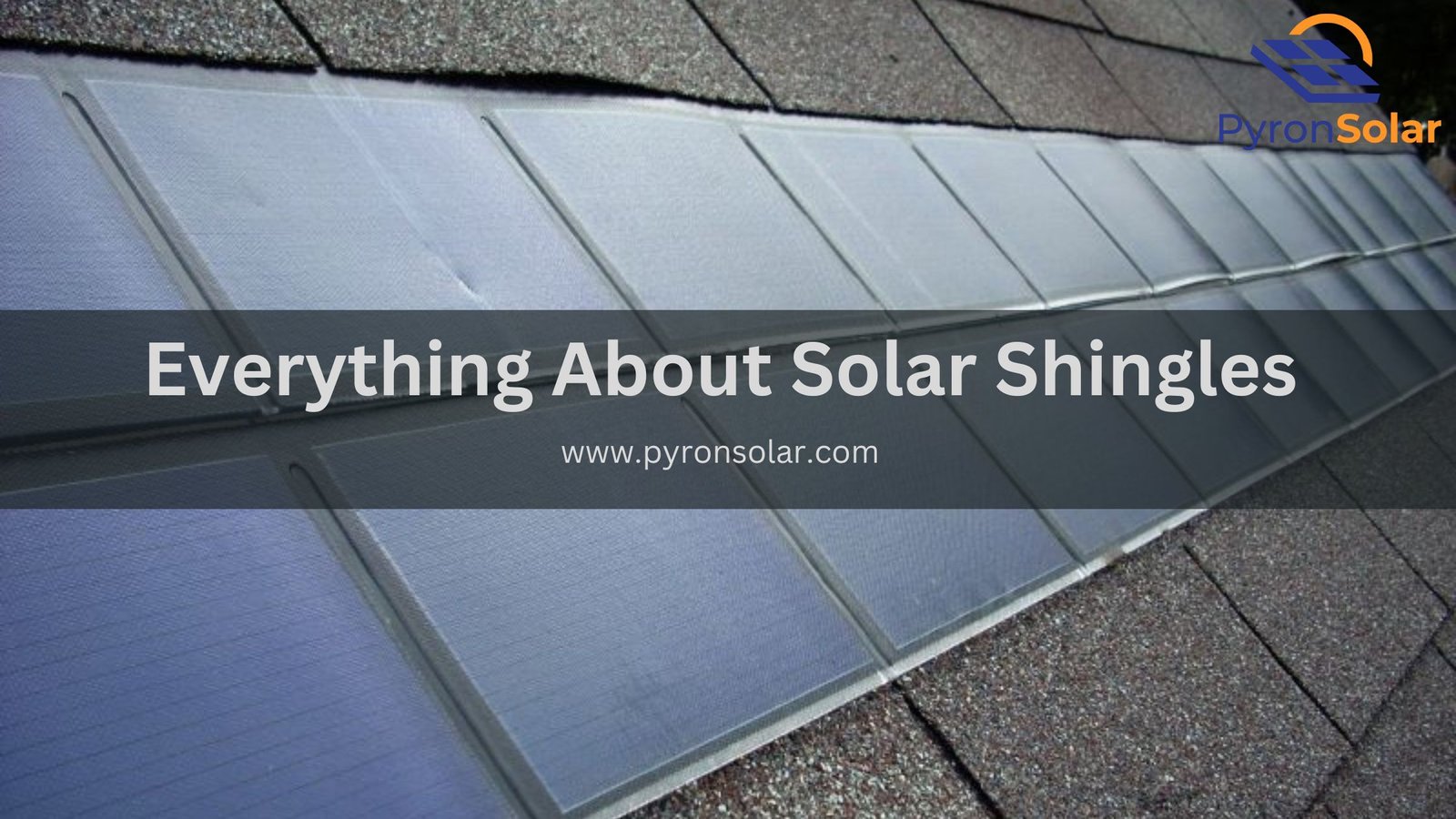In 1883, Charles Fritts developed the first solar cells built from selenium wafers and in 1954, a group of researchers at Bell Laboratories namely Daryl Chapin, Calvin Fuller, and Gerald Pearson created the first silicon Photovoltaic solar panel.
Many innovative technologies are emerging through the introduction of tandem solar cells that stack additional ultra-thin layers to develop a high-efficiency cell, increase its durability and lifespan, and reduce manufacturing costs. If Silicon and Perovskites collaborate in Tandem solar cells, they can utilize more of the solar spectrum to generate more electricity per unit cell.

Solar shingles are small solar panels made of CIGS materials which are a part of BIPV technology to double the electricity generation capacity. They are gaining popularity in the US due to the dual functionality of producing electricity and maintaining superior aesthetics.
Comparing solar shingles with standard solar panels helps you to understand their pros and cons, flexibility, size, and weight. Most Importantly, you need to choose the best solar shingles for your home by finding popular roof companies that offer the best warranty.
What Are Solar Shingles?
Solar shingles are small solar panels that belong to a special category of Building Integrated Photovoltaics (BIPV) to replace traditional roofing materials such as asphalt shingles or roofing slate. Compared to traditional solar panels, they provide cleaner solutions by blending with the beauty of your home buildings by ensuring high energy conversion without compromising on style.
Semiconductor materials used in solar shingles include monocrystalline silicon and Copper Indium Gallium Selenium (CIGS) which commonly possess the main feature of adapting into the existing or new roof structure to generate 100% power for household consumption through the photovoltaic effect.
The solar Shingles installation process is labour-intensive and takes longer time for installation to cover a particular area. Each solar shingle is positioned one after the other on a single building. After installing the solar shingles completely over the roof space, the installer is required to obtain a permit to connect the system under the roof to the electric grid. Also, installers are required to cautiously integrate solar shingles into existing roof structures to maintain waterproof and structural integrity by accurately positioning them for optimal sunlight exposure.
Pros and Cons of Solar Shingles
Before planning for any long-term investment in solar shingles, it is important to consider the benefits and drawbacks
Pros of Solar Shingles
Here are the important advantages of solar shingles you need to know in detail:
1. Aesthetically attractive: Solar shingles combine with roof covering and are more aesthetically appealing than conventional solar panels. It is a practical choice for homeowners to integrate ecological sustainability with visually captivating roofing solutions.
2. Resistance to Weather: Solar shingles are highly weather-resistant and fireproof to withstand harsh conditions. Additionally, an outer shell is made of impact-resistant glass that is difficult to break and can endure a hailstorm or wind storm.
3. Easier Maintenance: The maintenance of solar shingles is similar to the ordinary roof, which is easier to clean without any requirement for specialized equipment.
Cons of Solar Shingles
At the same time, you need to consider the main disadvantages of solar shingles
1. Higher Costs: The average price of solar shingles is $15,000 to $20,000 which is typically higher than the solar panels because of the amount and best quality of materials required for installation. Whereas, Tesla Shingles cost above $70,000 with a longer installation period.
2. Limited Availability: Due to the low availability of brands and technology, many regions still lack access to solar shingles. Their presence in the market is small, since less than 1% of solar installations consist of solar shingles.
3. Lower Efficiency: Solar shingles have less efficiency (14% to 18%) which is less than traditional solar panels (25%).
Solar Shingles vs Solar Panels

| Factors | Solar Shingles | Solar Panels |
| Installation Cost | Highly Expensive ($3 to $8 per watt) | Moderate cost ( $2.50 to $3.50 per watt) |
| Aesthetics | Less bulky and visually pleasing | Bulky and large |
| Installation Duration | More than two weeks
(depending upon the roofing company, the number of labourers and the building structure) |
Less than a day |
| Availability | Limited production | Used in most areas |
| Efficiency | 14% to 18% | 25% |
| Power Output | 13 watts to 70 watts of power per solar tile | 250 watts to 400 watts of power per panel |
| Life Span | 25 years to 30 years | 25 years to 40 years |
| Long Term Planning | Suitable for individuals who prefer to stay at the same location for many years | Ideal for individuals who frequently relocate from one place to another |
Average Cost
Typically, solar shingles cost between $21 to $40 per square foot for installation or the average cost is around $55,000. Whereas, solar panels cost $15 to $25 per square foot or $17,000 for a 5-kW system. Solar shingles are costlier than traditional panels because of their complex installation procedures.
Solar panels of different variants are available in several regions, which contributes to lower production costs than solar shingles that are less frequently installed due to their lack of availability.
Overall, solar shingles can be a cost-effective option for those individuals planning to get a new roof. Additionally, solar shingles are installed as a part of the replacement or restoration process, which reduces the additional cost of roofing materials and enhances savings on your electricity bills.
Efficiency
Solar Shingles have less efficiency (14% to 18%) than these two types of solar panels, namely Monocrystalline (15% to 24%) and Polycrystalline (13% to 16%).
The difference in efficiencies is due to the different materials and structures of solar cells. There is also a lot more about solar panel efficiency.
Since solar shingles are made from CIGS or monocrystalline cells, they have a lower efficiency rate than mono and polycrystalline panels. On the other side, Monocrystalline panels are made from single-structure pure silicon, whereas Polycrystalline panels consist of multiple silicon fragments.
Flexibility
Solar shingles combined with the existing roof provide a superior look and are flexible to be installed in places where there are space constraints for setting up traditional solar panels. For instance, in historical areas where authorities deny permission for installing commercial solar panels, solar shingles are the best alternative due to their diminished visual impact.
Solar Shingles are fixed in such a position that there isn’t any gap under them to allow airflow, which is different from typical solar panels that can be detached and reinstalled during relocation.
If a homeowner plans to move, the costly investment in the solar shingles installation won’t pay off as they remain permanent within the home.
Size and Weight
The average size of solar shingles ranges between 12 inches wide by 86 inches long, with an approximate weight of 13 pounds per square foot. Conversely, the solar panels range in the size of 65 inches long to 39 inches wide with 40 pounds weight. Notably, commercial solar panels are 78 inches long and 39 inches wide.
The electricity generation capacity of any solar installation is directly proportional to its size. As a result, solar shingles despite having their ability to adapt to complex roof shapes produce a lower power output due to their smaller structure than solar panels.
Aesthetics
Solar panels are designed for functionality rather than aesthetics because of their bulky nature and occupy the entire space of a building roof. On the other side, solar shingles are similar in appearance to standard roofing materials or asphalt tiles that can be installed as a part of the component rather than individually, which makes it less noticeable and architecturally eye-catching.
The overall curb appeal of your residential or commercial buildings might seem strange due to additional solar panels. Whereas, solar shingles have more curb appeal due to low-profile installation.
Lifespan and Durability
Solar panels have a high durability and lifespan of 25 years to 40 years and come with a warranty to safeguard your investment. Despite, solar shingles having long-term stability, they have a shorter lifespan of 25 years to 30 years compared to PV panels.
However, the recent developments in solar PV technology have led to improvements in both materials and systems, that resulted in efficiency, cost, and energy storage to improve the longevity and durability of both solar panels and solar shingles.
Warranty
Both solar panels and solar shingles usually come with a warranty of 10 years to 25 years. The warranty period ensures solar panels and solar shingles produce a specified amount of power, as well as separate limitations for durability and performance.
It is important to get a warranty from reputed solar installers that helps you gain peace of mind and guarantee your investments to provide clean and renewable energy for many years. As a result, the performance degradation of panels under warranty is safeguarded from several risks such as errors in manufacturing, material defects and ageing. There is so much important things about solar warranty you should know.
Popular Solar Shingle and Roof Companies
Here are some of the most popular solar shingle and roof companies listed below along with their pros, cons and estimated costs:
1. Timberline Solar by GAF Energy:
Pros:
- Higher efficiency
- Fewer leakages
- Stylish looks
Cons:
- Smaller production
- Lowest wattage per shingle (45 watts) than the typical versions (70 watts)
Estimated Cost: $40,000 for average homes and $30,000 with tax credits and other subsidies.
2. Tesla Solar Roof:
Pros:
- Elegant design
- Seamless compatibility with the roof and highly durable
- Saves electricity bills through net metering.
Cons:
- Highly expensive than normal solar panels
- Lower power generation per unit.
Estimated Cost: $35,000 to over $70,000 depending on the roof size and arrangement
3. CertainTeed Solar:
Pros:
- Best warranty options
- Black design to absorb more heat
- Trustworthy company.
Cons:
- Average performance of panel compared to its competitors.
Estimated Cost: Average size costs $15,600 and $18,000 approximately. The price can reach up to $11,000 when 30% of federal solar tax credit is applied.
4. Luma Solar:
Pros:
- Leading manufacturer
- Upgradable design
- Highly durable and performing materials than traditional roof shingles.
Cons:
- Lower power generation per unit
- It is more expensive than a new roof and individually purchased solar panels.
Estimated Cost: The price starts at less than $6.00 per watt for a simple roof and greater than $10.00 per watt for more complex designs. The average cost to install a new roof ranges between $5,960 to $12,740 approximately.
Tips on How to Choose the Best Solar Shingles for Your Home: Important Factors to Consider
You should consider these important factors before selecting the best solar shingles for your home:
1. Cost: The average installation cost of solar shingles ranges between $12,000 and $22,000 per 1,000 square feet of roofing. It was estimated in the year 2023 that for average-sized homes, the installation costs varied between $21,000 to $25,000. It means that the solar shingles are $21 to $25 per square foot depending upon the brand chosen, roof size and level of complexity.
2. Efficiency: Though solar shingles perform less than panels, the efficiency rate is still around 15% to 20%, if the monocrystalline silicon is used.
3. Warranty: A few reputed solar shingle manufacturers like “Tesla Solar Roof” provide three limited warranties such as:
- Product Warranty: Protects your roof from manufacturing defects
- Weatherization warranty: Overcome damages due to wind and rains
- Power output warranty: Guarantees that solar roof performance doesn’t decrease less than 95% for the first five years as well as ensures not to diminish more than 0.5% per year, which should continue up to the next 20 years.
4. Wind Rating: The capacity of solar shingles to resist strong winds and storms in several regions is determined by the wind rating, typically expressed in miles per hour (mph). The average wind rating of solar shingles ranges between 110 mph to 130 mph.
5. Output: Solar Shingles can produce an average power output of 13 watts to 70 watts per solar tile, and the advanced modules can generate 50 watts to 200 watts per shingle under best conditions.
Ray is an avid reader and writer with over 25 years of experience serving various domestic and multinational private and public energy companies in the USA.

